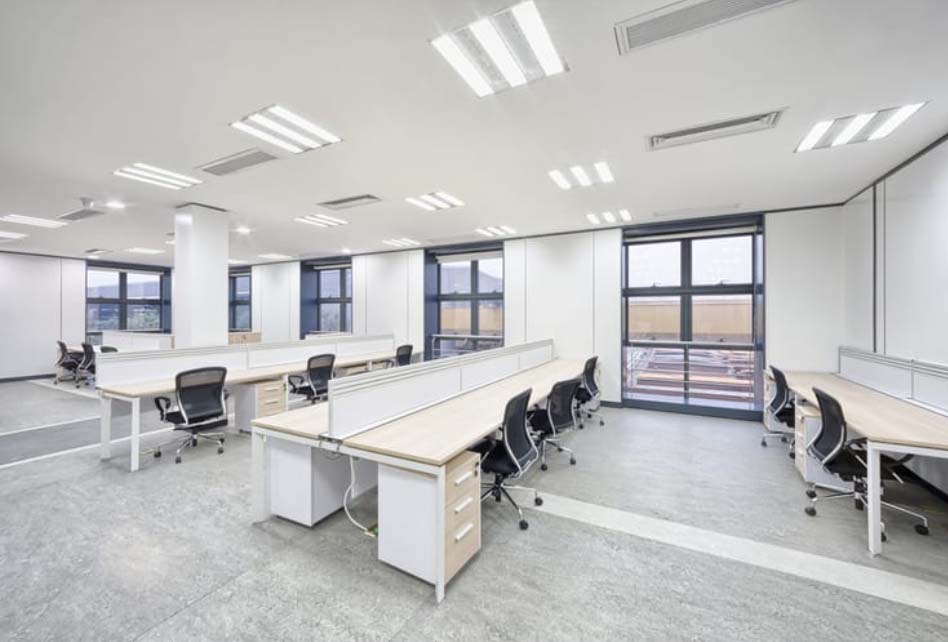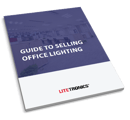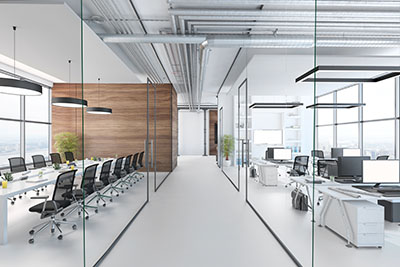Office life got a big shake-up in 2020.
Lockdowns and more staff working from home has changed how businesses think about and use their commercial office space – and how they can avoid paying energy costs for unused spaces.
At the same time, increased concern around climate change has led to the corporate world trying to find business-friendly ways to reduce their carbon footprint.
It’s the perfect time for business owners and facility managers to upgrade to LED – they just need the right expert to guide them.
That’s where you come in.
In this handy guide, we’ve pulled together everything you need to know about LED office lighting, so you can:
- Explain why older lighting can create problems for facility owners and property management firms.
- Demonstrate exactly how LED lighting will help them save money, improve safety and create a more attractive environment for employees and tenants.
- Understand common office lighting use cases, to ensure your proposal is impressively comprehensive.
- Create even better value with smart features and money-saving retrofit options.
Skip Ahead: See Office-Ready Products Here
Let's get started!
To jump to a specific section, click on one of the links below.
Signs It’s Time for an Office Lighting Upgrade
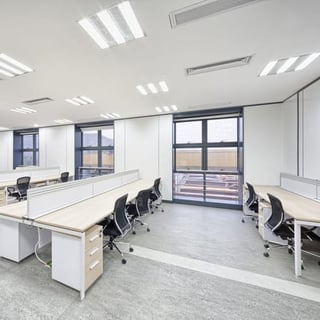
Office buildings often have an “If it ain’t broke, don’t fix it” philosophy when it comes to their lighting, quietly tolerating substandard lighting and poor energy efficiency simply because it’s what they’re used to.
Here are three great reasons why a building owner should take another look at their lighting:
1. The Lighting Technology Is Outdated
The U.S. Department of Energy reports that buildings account for more than 75% of all U.S. electricity use and more than 40% of all U.S. energy use. Almost 30% of that energy is consumed by interior lighting.
In commercial buildings, 80% of all lighting fixtures use fluorescent lamps to produce light. These linear fluorescent lamp (LFL) fixtures or luminaires account for about 1 billion units installed in the commercial and industrial lighting base in the U.S.— costing ratepayers around $27 billion annually.
Unfortunately, there are plenty of downsides for offices of sticking with older fixture technology like fluorescent, incandescent and compact fluorescent (CFL):
- Higher energy consumption: In most cases, LED fixtures use 18-50 watts of electricity which is significantly less than the fluorescent tubes they frequently replace.
- Safety hazards: The lamps in older technology fixtures can contain mercury gas, which is dangerous if inhaled. Should the lamps break above a work area, that puts employees in harm’s way.
- Unprofessional environment: Flickering or yellowed light in a commercial office space doesn’t inspire confidence in customers, visitors or potential tenants. For the employees working in those conditions every day, it makes their workplace feel outdated and uncared for.
2. Energy and Maintenance Costs Are High
The costs of old lighting technology go beyond the direct price of replacements.
- Energy costs: Even when the lumens per watts of older fixtures is the same as LED (which is rare), fluorescent fixtures give off more energy as heat rather than light, requiring additional energy needed from a building’s cooling system to compensate.
- Maintenance labor and materials costs: The shorter and unpredictable life span of older fixtures means maintenance staff is on a near-constant cycle of replacement. That also requires keeping a stock of all types of replacements on hand.
- Productivity costs: When fixtures go out in the office environment, there’s downtime for employees waiting in the dark for maintenance, and the disruption to the work area with ladders or lifts in the way. That’s a hit to productivity.
3. The Way Office Space Is Used Has Changed
Businesses were already rethinking the uses of their physical office space, but the pandemic put that shift into overdrive. A 2020 survey on The Future of the Office by CBRE Research found that:
61% of respondents indicated that all employees would be allowed to work outside the office at least part-time
73% of survey respondents say flexible office space will be a part of their long-term real estate strategy
60% of respondents said their companies were moving toward space design with less than 20% enclosed space
58% of respondents indicate they will adopt some level of free address in the future; “free address” means employees are not assigned to an individual desk and instead share a network of spaces (offices, workstations, collaboration space, focus rooms and amenities)
Office spaces need lighting that can be adjusted to meet the needs of a variety of workers and activities – and older fixtures just can’t do that.
Related Reading: Guide to Selling Office Lighting
Benefits of LEDs for Office Environments
Now that we’ve established how unsuited old technology can be for the modern office, let’s talk about the ways LED is ideal for meeting the office customer’s needs, so you can convey those benefits to your prospects:
 Flexibility: Post-pandemic, businesses may be experimenting with new office layouts: open plans, shared spaces, etc. Concepts like ‘free address’ mean a desk can be used by a salesperson one week and a graphic designer the next. Adjustable wattage and color temperatures, sensors, scenes, Bluetooth controls — all the smart features LED lights offer can give offices the flexibility needed for any configuration or use.
Flexibility: Post-pandemic, businesses may be experimenting with new office layouts: open plans, shared spaces, etc. Concepts like ‘free address’ mean a desk can be used by a salesperson one week and a graphic designer the next. Adjustable wattage and color temperatures, sensors, scenes, Bluetooth controls — all the smart features LED lights offer can give offices the flexibility needed for any configuration or use.- Better productivity: Light plays a major role in how employees feel and perform at work. Dim lighting can cause eyestrain, headaches and drowsiness. On the other end of the spectrum, harsh lighting can also cause eyestrain, and has been known to trigger migraine headaches. Poor lighting can also interfere with employees’ circadian rhythm that regulates sleep, resulting in foggy-brained staff and reduced productivity.
- Less maintenance and disruption: The office is a working environment, so any activity that interrupts meetings, calls, deskwork, etc. is unwelcome. Burned-out tubes can make work areas unworkable, and the arrival of maintenance with ladders will disrupt and inconvenience employees.
- Energy savings: Offices burn plenty of electricity to power computers, copiers, phone systems and more. There are few decisions a business owner of facility manager can make that will have as much of an impact on their carbon footprint and bottom line as upgrading to more efficient LED lighting.
Related Reading: How Lighting Affects a Workplace
Smart Features Versus IoT
Lighting is no longer just lighting.
Internet of Things (IoT) and smart features have introduced new possibilities for office buildings – and for your business.
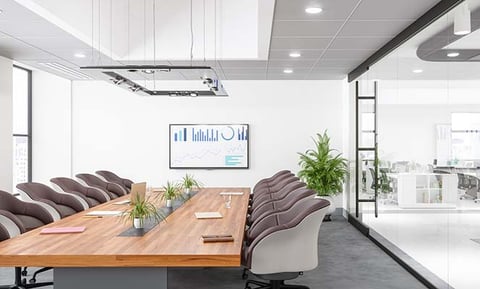 IoT makes use of sensors, software, and other technologies embedded in building systems to allow the collection and exchange of data with other devices and systems over the internet. The data captured can then be used to make the systems more intelligent, while identifying opportunities for energy efficiency. Building owners can also implement a complete building management system, with integrated lighting, HVAC, security and more.
IoT makes use of sensors, software, and other technologies embedded in building systems to allow the collection and exchange of data with other devices and systems over the internet. The data captured can then be used to make the systems more intelligent, while identifying opportunities for energy efficiency. Building owners can also implement a complete building management system, with integrated lighting, HVAC, security and more.
But while IoT offers business owners unprecedented control and access to data, there is a downside: cost. Because they are complex and involve multiple systems within a building, they’re often expensive to install.
LED lighting equipped with smart features can provide a middle ground for business owners or facility managers who want more advanced controls and energy savings but for whom a full IoT system is a bit overkill.
Here are some of the ways smart features can transform how your customers use their lighting:
- Bluetooth control: Rather than operating fixtures individually with switches throughout the building, smartphone apps and other connected devices give users the opportunity to control single fixtures or groups of fixtures from single place.
- Occupancy sensing: Much of the energy wasted by large offices results from lights left on when no one needs them. With motion or occupancy sensors, lights can switch themselves off automatically when no one is detected in the room.
- Daylight harvesting: Many offices have large windows that let in a lot of natural daylight. Smart illumination systems can detect this light and adjust the artificial illumination accordingly, ensuring no unnecessary energy is wasted.
- Time scheduling: Facility managers can schedule lights to be turned on only during specific hours. This prevents lights from staying on accidentally when no one is present.
- Group editing: Older lighting systems require large groups of lights to be on or off at the same time, regardless of how many are actually required. Smart lighting solutions, however, allow for each fixture to be controlled independently. Businesses can create an appropriate lighting plan for every room, aisle, or area and adjust those fixtures all at once rather than individually.
- Scene selection: The ability to control the brightness and intensity of each LED means employees can illuminate each space according to need. This means employees can choose pre-programmed scenes based on how that space is being used at that time, such as for meetings or presentations.
Related Reading: Harnessing Occupancy Sensors for Energy Savings & Safety
Understand Common Office Lighting Use Cases
So, you now have a better idea of:
- The risks and downsides of outdated office lighting
- The benefits LED lighting can bring to an office environment
- The features and technology that can add incredible value to LED office lighting
Before you make that sales call, though, it’s important to know every possible way in which lighting is used in an office building environment. That way, you can uncover even more potential opportunities while reassuring building owners that you have all the bases covered and are the right team for the job.
While there are countless types of business conducted in offices, most have these categories of use in common:
Workspaces
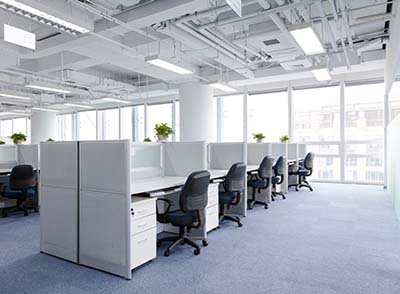 Office spaces come in a variety of configurations. The presence or absence of walls makes a big difference in how light spreads in a space, as do windows, clear panels or conference room walls, elevator banks, filing cabinets, columns, etc.
Office spaces come in a variety of configurations. The presence or absence of walls makes a big difference in how light spreads in a space, as do windows, clear panels or conference room walls, elevator banks, filing cabinets, columns, etc.
The workspaces where employees sit should be lit to suit the types of work they do. An accountant studying printouts may need brighter light than a receptionist greeting visitors. Function will dictate lighting needs in any office setup.
Open offices
Open offices are increasingly popular because they allow for easy interaction and communication among a team. This floorplan is typically made up of groups of desks with low (or no) barriers between them. Overhead fixtures may be the only source of light.
Things to keep in mind:
- It is important to understand what workers in an open plan will be doing. Do they need bright light for reading or distinguishing colors? Will glare be an issue on computer screens? Get a good understanding of the level of lighting needed for the tasks that must be completed.
- In an open plan, you want the light distribution and consistency to be equal – it’s really all one space and differences in light level or color will be very noticeable. Luckily with LEDs, you can use fewer fixtures to get a uniform quality of light in an open space.
Cubicles
While this style of office layout is seen by some as outdated, it still allows for privacy and focus for employees, which makes it the right option for certain types of office work. Cubicle walls are typically shoulder to head height and have few (if any) clear panels. Shelving and angles can create shadowy areas on worksurfaces that need to be lit for task work.
Things to keep in mind:
- This office style tends to be used when employees are doing individual tasks that require concentration. That often is paired with a need for bright, clear light that casts no shadows and doesn’t cause annoying glare off computer screens.
- Cubicles present challenges to light distribution and consistency. While you can cover more area with fewer fixtures with LEDs, cubicle walls will always cast shadows unless each is lit directly from above. Even then, shelves and upper storage can block light from reaching the worksurface. You may need localized lighting in addition to overhead LEDs to achieve the 40-50 foot-candles needed at the desktop level.
Individual offices
Individual offices are most common in executive or management areas. They can consist of actual rooms or high cubicle walls. They also tend to occupy the outer perimeter of floors, preventing light from windows reaching interior spaces. Again, shelving and walls may create shadows on worksurfaces that will need more localized light to deliver 40-50 foot-candles at task level.
Things to keep in mind:
- As above, you’ll need to know what level of lighting is required for the tasks that will be completed in these offices.
- The placement and size of these offices means they may not have consistent light distribution from regularly spaced overhead fixtures.
- Perimeter offices with multiple windows may be good candidates for daylight harvesting. More senior employees may also want to take advantage of customizations like the ability to dim or brighten their lights depending on preference.
- A work-from-home policy or frequent travel may impact how often individual offices are used, making them a potential candidate for occupancy sensing.
Collaborative Spaces
Shared spaces in offices may be bustling with people … or completely unoccupied. With many possible users and uses, it’s helpful to know how the space is used every day and for certain business events.
Breakrooms
Some breakrooms function as the kitchen and dining room of the office and will need bright light to ensure cleanliness. Others are just for employees to ‘take five’ between assignments and can be a little warmer in color. Make sure you learn how the breakroom is used, how often and by which employees.
Things to keep in mind:
- Because they are designed to be used only occasionally during the workday, breakrooms are ideal candidates for occupancy sensing.
- If they are situated along a bank of windows, breakrooms can benefit from daylight harvesting to dim the lights during peak lunchtime hours with no loss of visibility.
Conference rooms
Like a breakroom, conference rooms are used periodically throughout the day. But the variety of activities they host is generally much broader.
Things to keep in mind:
- From team luncheons to video calls, conference rooms need versatile lighting that can be easily adjusted for each use. Users may want lights that can dim during presentations or be warmer for board meetings.
- Conference rooms are good candidates for using controls to create lighting scenes for the most common uses.
- As with break rooms, there may be long periods during the day when conference rooms are empty. Occupancy sensors will ensure the customer isn’t relying on employees turning off lights to save energy.
- Often used for high-level meetings, many conference rooms are showcases and occupy a prime position in a building with a view. Large or plentiful windows make daylight harvesting an obvious choice for these spaces.
Transition Spaces
People are always moving around office buildings during the day. Health and safety will be key considerations in how to light the transition spaces employees use.
Stairwells
According to the National Safety Council, more than a million injuries are caused by stairway falls each year in the U.S. and stairway accidents are the second leading cause of injury. Adequate lighting in these spaces is critical to employee health and safety, especially in emergencies (more on emergency lighting later in this e-book).
Things to keep in mind:
- As a primary means of egress in an emergency, all stairwells must be equipped with emergency lights or lights supplied with an emergency backup battery.
- In general, the minimum light levels required in a means of egress like a stairwell is one foot-candle. The NFPA, however, has specified that the minimum light level on new stairways should be no less than 10 foot-candles measured on the floor when in use. You should confirm any specific building codes in your jurisdiction.
- Occupancy sensing can be a good option for stairwells, especially in buildings with elevators or for stairwells that aren’t regularly used.
Hallways
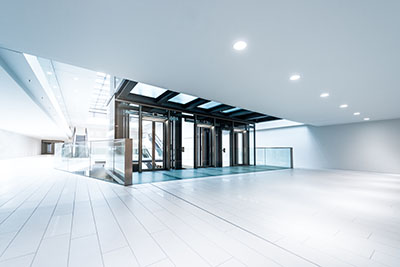 Depending on the office layout, hallways can be part of the egress path leading to an emergency exit and can also lie in an interior space that gets little daylight. In both cases, adequate light for safe passage every day or in an emergency is a requirement.
Depending on the office layout, hallways can be part of the egress path leading to an emergency exit and can also lie in an interior space that gets little daylight. In both cases, adequate light for safe passage every day or in an emergency is a requirement.
Things to keep in mind:
- Customers can select ceiling mounted LED emergency lights or equip overhead LED lights with emergency batteries. As a result, their emergency lighting can closely resemble normal lighting conditions.
- Consistent lighting will ensure a clear route to exits and can be very helpful to office visitors not familiar with the egress path.
- Light level requirements for emergency egress illumination are shown in IBC 1008.3.4 and 1008.3.5 and in NFPA 101 7.9.2. The egress path must be illuminated at an average level of 1 foot-candles, with a minimum level of 0.1 foot-candles; the maximum-to-minimum illumination level ratio must be 40:1 or less. Emergency lighting must remain illuminated for at least 90 minutes.
- Egress hallways that run along exterior walls with windows can use daylight harvesting as long as the dimming never goes below the required light level in an emergency.
- Self-testing emergency lights will reduce the burden on facility staff and ensure all lights are ready for service when an outage happens.
Parking
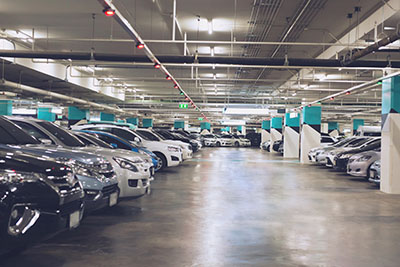 Parking garages present challenges for office space users: sharp corners, tight spaces, and limited visibility can easily make the garage unsafe. Parking lots aren’t much better: Poor lighting can turn a nighttime parking lot into a shadowy, hazardous place for drivers and pedestrians alike. For employee safety and comfort, it’s important for parking areas to have appropriate light output and distribution.
Parking garages present challenges for office space users: sharp corners, tight spaces, and limited visibility can easily make the garage unsafe. Parking lots aren’t much better: Poor lighting can turn a nighttime parking lot into a shadowy, hazardous place for drivers and pedestrians alike. For employee safety and comfort, it’s important for parking areas to have appropriate light output and distribution.
Things to keep in mind:
- Visibility will always be top concerns for the safety of pedestrians and cars. Talk to the customer about how to create a safe, well-lit parking area that doesn’t burn unnecessary energy.
- Whether the parking garage is underground or open to daylight will greatly influence the lighting needs. So will the operating hours of the office space. Exposure to the weather will also factor into the choice of LED light fixture and more durable exterior fixtures may be needed.
- While interior areas of a garage may need light at all times, daylight harvesting can be an option for perimeter areas and top levels.
- Occupancy sensing is another option, depending on the use requirements and active hours. Some occupancy sensing can dim to 60% when there’s no occupant and brighten to 100% when needed.
- Garage entrances and exits generally need to be lit at all times for safety.
- Some parking garages will need every other light to be lit, depending on local requirements.
Related Reading: Parking Garage Lighting: Opportunities for Safety & Savings
LED Office Lighting Fixtures: to Replace or Retrofit?
You’ve shown the customer why their old lighting isn’t serving them and have identified all the ways in which LED lighting will make their office building so much brighter, safer and energy-efficient.
One more question: Should the old fixtures be replaced or retrofitted?
In deciding whether to retrofit their existing fixtures with LED or replace the fixture altogether, office lighting customers will need your help to understand all the associated costs and benefits. Here’s a quick rundown:
| New/Replacement Fixtures | Retrofit Kits | ||
| PRO | CON | PRO | CON |
| Fixtures are often (but not always) cheaper | Added cost to haul away can be extensive | No haul-away cost for old fixtures | Fixtures are often (but not always) more expensive |
| A good choice for new builds | Often requires opening the ceiling plenum | No need to open ceiling plenum | Not an option for new builds |
| Offer more options in styles | Open ceiling can expose harmful substances in older buildings | Fast and easy to install (especially Litetronics’ magnetic retrofit kits) | Fewer style options |
Litetronics Retrofit Fixture Options
If you haven’t looked at LED lighting retrofit fixtures recently, we have excellent news. Today’s retrofit options offer all the latest technology in an attractive package. And here’s the kicker: Because LED retrofit kits are so easy to install, you’ll finish the job faster – and move on to the next one.
| Litetronics LED Magnetic Retrofit – The market’s easiest fluorescent-to-LED troffer retrofit kit. This one-piece retrofit solution snaps right into your troffer for easy attachment and alignment. | 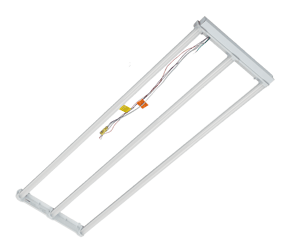 |
| Litetronics LED Light Panel Retrofit – A new level of control and convenience for grid ceiling applications. Equipped with an onboard sensor that supports both occupancy sensing and daylight harvesting, this retrofit kit is the ultimate energy reduction tool. | 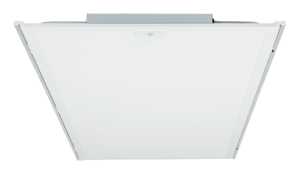 |
| Litetronics LED Volumetric Retrofit – Combining top-of-the-line efficiency with a stylish, modern design, the LED Volumetric Retrofit is an ideal solution for updating interior grid ceiling applications. The kit can be installed by one person in less than two minutes, without breaking into the ceiling plenum. | 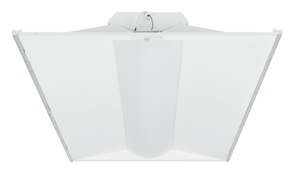 |
Litetronics New/Replacement Fixture Options
| Litetronics LED Volumetric Troffer – The LED Smart Volumetric Troffer delivers up to 125 lumens per watt (LPW) over the course of its 100,000-hour rated life. Equipped with an onboard sensor that supports both occupancy sensing and daylight harvesting standard out of the box. | 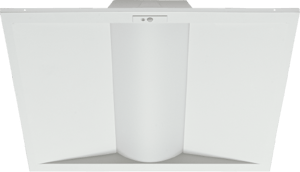 |
| Litetronics LED Light Panel – Efficient and stylish, our standard LED Light Panel model is equipped with field-adjustable light output, enabling the lumen output and wattage to be set to one of five specific levels based on the needs of the user. | 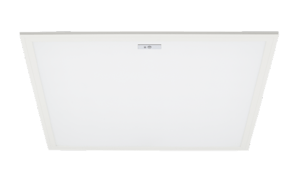 |
| Litetronics LED Wrap Fixture – This linear lighting solution delivers uniform, high-quality light distribution, optimal energy usage and zero maintenance. The fixture includes adjustable color temperature as well as adjustable wattage, allowing the installer to fine-tune the fixture to better meet the needs of the application. | 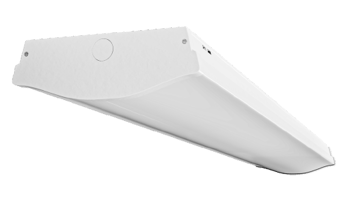
|
| Litetronics LED Stairwell Fixture – Specifically designed for limited use areas such as stairwells, this fixture comes equipped with a microwave occupancy sensor and daylight sensor to automatically adjust output based on occupancy and available light in the space. | 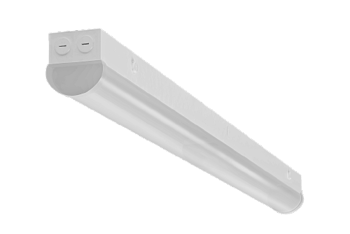 |
| Litetronics LED Strip Fixture – This fixture can be surface, suspension or t-grid mounted, either in a single-fixture configuration or as a continuous row to cover more ground from one power source. Delivers consistent, high-quality light distribution, minimal energy usage and zero maintenance. |  |
Litetronics Add-Ons to Consider
| Litetronics LED Emergency Battery Backup – This unit delivers emergency power to a wide range of Litetronics standard LED panels, troffers, strips and retrofits. In the event of a power outage, it supplies the connected fixture with 90-minutes of light, enabling sufficient visibility for occupants to safely exit the space. | 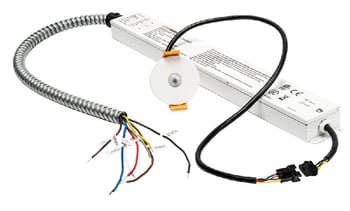 |
Benefits of Litetronics Products
As a leading provider of LED office lighting fixtures for almost 50 years, no one knows as much about them as Litetronics. We believe in our products and stand behind them. Litetronics LED fixtures are 100,000-hr-rated with a 10-year warranty across almost the entire product range. That’s years of high-quality, maintenance free light for the office.
Our experience in installing office lighting — including LED office ceiling light fixtures, luminaires and retrofits — makes us the ideal partner for any office looking to take advantage of this technology. We pioneered the magnetic retrofit kit because we think about the mechanics of how you’ll be doing the install. Our fixtures come with as few pieces as possible and require minimal assembly and few tools.
LED Office Lighting Is in Demand – Are You Ready?
LED office lighting is only going to get more popular as facility owners and property managers look for ways to make their office lighting more flexible, more functional and much more energy-efficient. And now that you know more about the benefits, the options and the use cases, you’re in a much better position to take advantage of this red-hot market.

